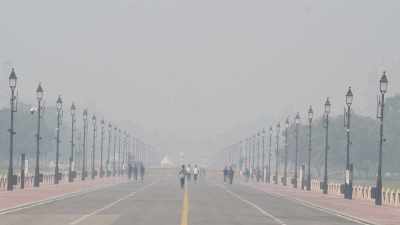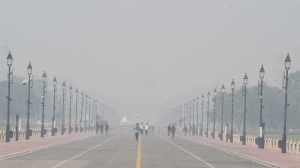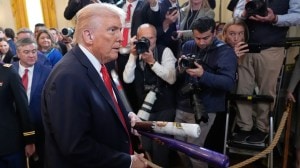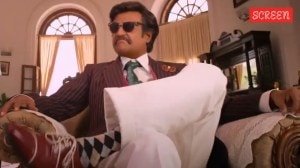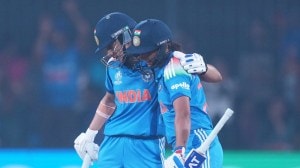Is this Savarkar’s Bharat?
With his portrait now firmly installed in Parliament, Vinayak Damodar Savarkar has been resurrected as a hero of our freedom struggle. The L...

With his portrait now firmly installed in Parliament, Vinayak Damodar Savarkar has been resurrected as a hero of our freedom struggle. The Left and Congress parties were, of course, caught sleeping when the portrait was cleared by the relevant parliamentary committee, and by the time they woke up and registered their protest it was too late.
The portrait is controversial for many reasons. It is alleged that Savarkar once apologised to the British, giving an undertaking that he would remain loyal to them till the very last, that he advocated the two-nation theory, that he vandalised mosques, that he was involved in the assassination of Mahatma Gandhi, and that he condoned untouchability.
There is, however, a silver-lining to the entire trauma and drama. Right-thinking people have got an opportunity to expose this bogey. His portrait has created the context to dissect the ideology which Savarkar represented. Let us analyse the true character of Savarkar and his legatees in the Sangh Parivar.
Savarkar was the product of a feudal, caste-ridden society. With lower castes oppressed into carrying out all menial and unpleasant tasks, his class was able to enjoy luxurious lives through manipulation, a divide-and-rule policy and exploitation.
The cause which he espoused needed great sacrifice, which Savarkar’s background did not support. Traditionally and culturally, India’s rulers have not had the requisite resilience to suffer for the truth and more often than not they have opted for an easy and hedonistic approach.
Savarkar is being hailed as a “hero” and that is why the Sangh Parivar calls him “Veer Savarkar”. Let us understand the meaning of courage in the dictionary of the Sangh Parivar. Intruders crossed into Kargil and our defence establishment under a BJP-led government did not even detect this intrusion for months. While clearing them away, it was done bit by bit, like chasing a thief out of one’s house, one room at a time. All of this was then presented as a great victory. Names of dead warriors were invoked in the subsequent general election to get votes.
Similarly, in the recent elections for the Gujarat assembly, Chief Minister Narendra Modi fought his electoral campaign against Mian Mussarraf. How can Pakistan, smaller in size and potential, match India? How can they be portrayed as equals?
As stated above, the adulation of Savarkar helps bring out the true character of the Sangh Parivar and the BJP. Savarkar held: “Manusmriti is that scripture which is most worshippable after the Vedas for the Hindu nation and which from ancient times has become the basis of our culture, custom, thought and practice. This book for centuries has codified the spiritual and divine march of our nation. Even today the rules which are followed by crores of Hindus in their lives and practices are based on Manusmriti. Today Manusmriti is Hindu law.”
Savarkar wanted India to be for Hindus only. His love for Manusmriti leaves us in no doubt that in his scheme of things dalits should always remain slaves. It is to be noted that backwards, who account for about 54 per cent of the population, also fall in the category of shudras. Only the 15 per cent so-called upper castes are to enjoy dignity, freedom, power and wealth in Savarkar’s India. Women as a grouping also would not find space in Savarkar’s India. Thus less than 10 per cent of the population would have full rights and freedoms in India.
Savarkar’s supporters must now answer one question: Is this their idea of India, an India where 90 per cent of the inhabitants are considered unwanted?






- 01
- 02
- 03
- 04
- 05


